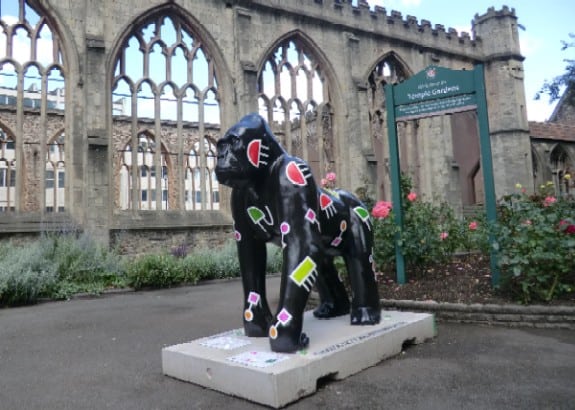
By James Dacey
Say hello to Tensor. His striking pelt has been inspired by the English mathematical physicist Roger Penrose, who created a visual language for representing complex mathematical expressions.
Tensor has just appeared today in a quiet public garden in central Bristol, just around the corner from the offices of physicsworld.com. He is one of a band of 60 life-sized decorated gorillas that will be appearing around the city to celebrate Bristol Zoo’s 175th anniversary.
Last year, the organizers of this public art exhibition approached IOP Publishing (which publishes physicsworld.com) to ask if it would like to sponsor and design a gorilla for the show. The challenge was taken on by in-house artist Fred Swist, collaborating with art director Andrew Giaquinto, and the pair came up with the idea of using Penrose’s graphical tensor notation. These pictorial elements, used in physics and pure maths, comprise simple shapes connected by lines. For instance, they have been used to visualize interactions between particles and fields in spin networks.
“The project was quite challenging, as we were trying to render complex mathematical notations into striking and colourful visual forms, to appeal to a wider audience,” said Swist.
Tensor is among the more high-brow of the gorillas as his cooler mates include an Elvis gorilla, a Funky Gibbon, and a Spidermonkey in trademark red and blue. But in addition to entertaining Bristolians and visitors to the city, there is also a serious note to the Wow! Gorillas exhibition. It is designed to promote Bristol Zoo’s gorilla conservation project and Wallace and Gromit’s Grand Appeal, which raises funds for the Bristol Royal Hospital for Children. When the exhibition comes to a close in mid-September, the life-sized painted gorillas will be sold at a charity auction and the funds will be donated to these causes.



